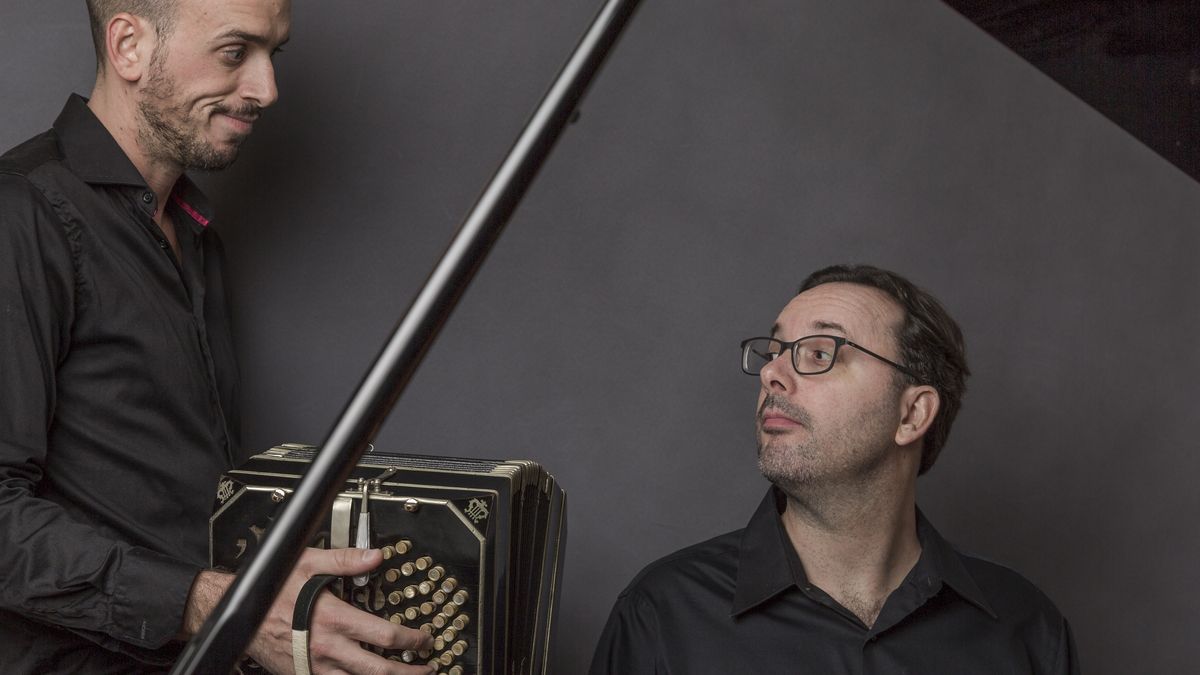“Spotifiy is great but also detrimental to being able to go deeper. “The music industry left music aside, it aims at something else,” says Nicolas Guerschberg, pianist and composer from Escalandrum with Pipi Piazzolla.
“There is a lack of space to play, there are fewer festivals, there is quiet in the large cultural centers,” says Alejandro Guerschberg, brother of Nicolás and bandoneonist disciple of Julio Pane. They both released the album “Against the Strings”, a duo of brothers, which can be heard on all platforms. We talked with both.
Journalist: How is this duet experience with your brother? How did it come about?
Alejandro Guerschberg: We always worked a lot together, I played in groups that he led, we recorded songs, we traveled through Europe, Central America, the East, we recorded film music and this experience captures everything that we have been doing for years. I asked Nico to write for this duo formation with string quintet and he did so very willingly.
Nicolas Guerschberg: It is a project of brothers in which the emotional, the fraternal and the family have a lot to do with it. We have always shared music, I started first because I am older and soon he started and we continue together in ensembles and tours. It is unique to be able to work and make music with my brother, it is very special, it adds to our relationship. He says that he is a musician because of me and I am counting on him.
Q: What genre predominates, what fusions appear?
NG: It is closer to tango but I am the composer of the pieces so I feel that jazz, improvisation, author’s music, Latin American, contemporary, 20th century music passes through me, those influences are filtering through. The basis of piano, bandoneon and strings is non-traditional tango.
AG: There is music from Buenos Aires and it could be called current Argentine music. With influences from academic and chamber music, it has improvisation and jazzy moments appear but it is written with freedom so that the solos and phrasings can be expressed as one wants. Although without as much freedom as jazz, it is patterned but not attached to a particular root. It is a mix of everything that Nico has in language.
Q: How do you see the moment of jazz and music today?
AG: Regarding non-mass music, in my case new tango, the absence of official support spaces is felt. It continues to operate in private spaces, the spaces for tango have been reduced, they are subject to dancing and tourism. There are fewer music cycles, the festivals were larger, large spaces like CCK are quiet. We always look for support because tango is a music that represents culture without being mainstream and needs official support, from the provinces and municipalities. There is a big cut. The private in jazz works more or less well for a limited audience with a certain purchasing power.
NG: Jazz is going through a very good moment, it depends on creativity and desire, there is not much industry or objectives other than playing. The music industry is moving towards a place that is not very artistic. At other times, popular music had content in which music was more important, but now it is not so in those mainstream proposals. The music I make is a space of resistance, not to sell, it is merely artistic. We play in jazz and music clubs, people come eagerly and we don’t play for massive audiences.
Q: How do you get along with Spotifiy for music distribution? What did music gain and what did it lose with the platforms?
NG: For my generation it is a dream, crazy, we bought CDs, LPs, but if you told me when I was 20 that I was going to have all the music in my pocket, I wouldn’t have been able to believe it. That access is good, it’s not bad but on the other hand it goes less in depth. Before I used up cassette tapes and listened to records until they were scratched, now with everything within reach the algorithms throw you playlists.
AG: It is an incredible tool. As a child I listened to cassettes, then compacts, and the amount and enormity of information we access thanks to the platforms is incredible, it has no limit. Maybe that makes there something ephemeral, immediate, fast, fragmented, one misses longing for the records, going to look for them, having a physical cover art, having more information about the technique, recording places, the team that participated, that’s what I’m missing. However, access is much easier, more immediate. I really like Spotify, it’s complete, there are the lyrics, also Tidal which has better quality audio. I got into the world of vinyl to rescue records from my family, my old ones, I have a tray and I listen, I like the beauty of the covers and it has that thing of listening to the entire side of the record on one side, giving it its moment. For the common people that ritual is lost. Not to mention changing records in Parque Rivadavia or looking for them in stores.
Source: Ambito
I am an author and journalist who has worked in the entertainment industry for over a decade. I currently work as a news editor at a major news website, and my focus is on covering the latest trends in entertainment. I also write occasional pieces for other outlets, and have authored two books about the entertainment industry.




